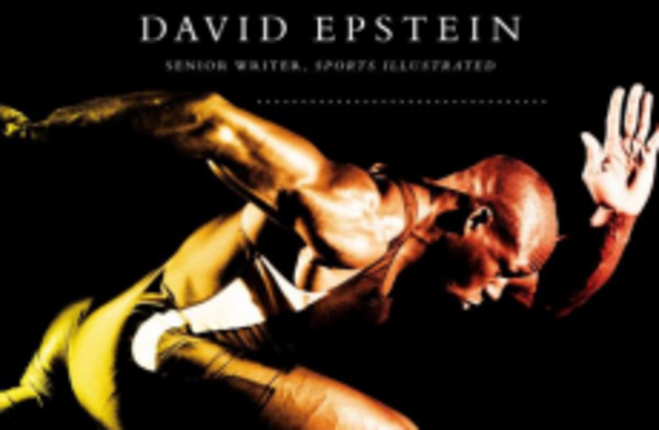IN A BOOK packed with fascinating anecdotes, it’s hard to pick out highlights from David Epstein’s The Sports Gene.
However, pushed to do exactly that, this writer cannot overlook the story of ‘Superbaby’. Sometime around the year 2000, a baby was born in a Berlin hospital, but not any normal baby. Doctors noticed the child’s “bulging biceps”, his “chiseled” calves and glutes that “[y]ou could bounce nickel off”.
By the tender age of four ‘Superbaby’ had “no trouble holding 6.6-pound [3kg] dumbbells suspended horizontally at arm’s length”. The boy looked normal with his clothes on but underneath, his muscles were roughly double the size of similarly aged male children.
Epstein continues to explain how a lack of the protein ‘myostatin’ – part of the GDF-8 gene – can result in this remarkable genetic abnormality, before delving into similar examples in mice and whippets. The chapter concludes by suggesting some of the lessons we can take from the science, a trait throughout the book.
Epstein is a Columbia University graduate who has become universally-regarded for his investigative reporting for Sports Illustrated in the US. He co-authored the revelation that Alex Rodriguez, the baseball star, had tested positive for steroids in 2003, the same year he was named the American League’s Most Valuable Player award.
The byline of The Sports Gene reads, “Inside the Science of Extraordinary Athletic Performance”. It’s very self-explanatory, with Epstein drawing together mountains of scientific research into sporting achievement to reveal the physical, genetic traits that certain athletes possess.
The joy of this book is its balance; Epstein continually acknowledges that practice can be vital in producing world-class performers, even if it is on occasion unnecessary. Many commentators see The Sports Gene as a response to the so-called ’10,000-hour rule’, which burst into the mainstream after Malcolm Gladwell provided an incomplete overview of it in his 2008 book Outliers: The Story of Success.
Gladwell is seen as one of the main drivers of a widely accepted, but highly debatable, notion that ‘talent’ doesn’t matter, 10,000 hours of deliberate practice will make anyone an expert in anything they desire to do. While there are certainly positives in people believing that, it doesn’t tell the whole story.
That’s where Epstein’s work comes in, providing us with thrillingly readable scientific fact about what physically makes the best sporting performers. However, he balances that utterly with the repeated statement that training is important too, although not necessarily 10,000 hours of it.
Epstein’s own fascination with the subject matter is infectious, making The Sports Gene such a pleasure to read. The former 800 metres runner believes that the study of genetics can help us to improve selection of athletes for particular sports. A person’s body shape may mean that they can never be sprinter, but those same physical elements might mean they have potential in swimming, for example.
There is no mention of Ireland within the book, but Epstein filled TheScore.ie in on an interesting gene mutation that may contribute to our achievements in sport.
Irish people have among the highest frequencies in the world of the MC1R gene mutation that is responsible for about 80% of redheads, and the light skin pigmentation that often goes with it.
“Jeffrey Mogil of McGill University Montreal has shown that that mutation, in both animals and humans, causes increased tolerance to certain types of pain. So it may not be a direct athletic skill, but [there's] no question that pain tolerance is critically important in a variety of sports.”
Epstein also pointed out that Western Europeans tend to have proportionately longer femur bones than the tibia, which should be a mechanical advantage for cycling. However, a recent study has shown that Ireland had the slowest rate of growth in a European study of height trends, meaning “you would expect to see Irish athletes underrepresented in sports where very tall stature is important, like basketball and volleyball and so forth.”
Ireland is not the focus of The Sports Gene, but there are so many examples and anecdotes that we can learn from it that may aid our sporting development. Even if the book does not act as a spark for anything like that, it is one of the most interesting you will read this year or any other.
If sport is a passion, The Sports Gene is required reading.

